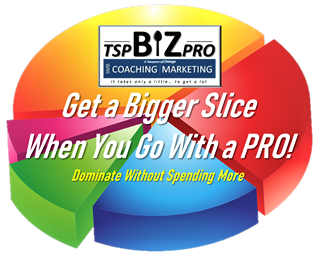The Conversion Equation
I’m going to make this somewhat complicated subject simple – and the explanation brief so you can get on with business. But it’s important for you to understand. Using the Conversion Equation (below) in all your marketing is the difference between advertising and consistently effective advertising. No one locally is going to use this or educate you on it because they don’t know it themselves. This isn’t taught in marketing school, business school or by ad agencies or media companies.
“I know half my advertising is wasted. Problem is, I don’t know which half.”
– John Wannamaker | Philadelphia
(the father of modern department store business model)
The Conversion Equation was developed from 35 years of on-the-street marketing with small to medium sized business owners. It’s not used by Madison Avenue, Michigan Avenue, or Santa Monica Boulevard ad agencies because their clients are primarily branding – not direct response like you want if you want to sell your products and services. You don’t have to take my word for it. Try it. What have you got to lose?
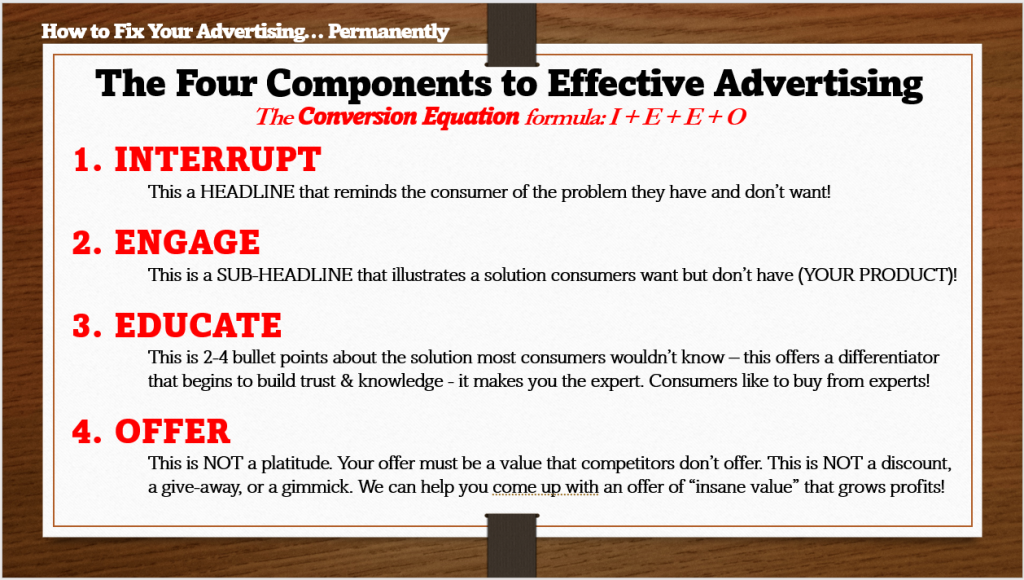
If you need more help in how to fully leverage the Conversion Equation, give us a call at 563-293-5930 or click here to schedule a 15-minute conversation online with one of our Senior Advisors. The call is free.
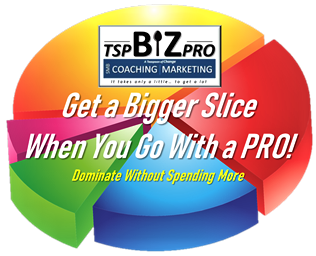
Advertising Vs Marketing
Across 35-years of guiding small business owners, I’ve found most owners use the terms “advertising” and “marketing” interchangeably as if they mean the same thing. They don’t: Marketing is a strategy – advertising is a tactic that is typically used in marketing.

Advertising Vs Marketing: Strategy sounds like a lot of work, where advertising is easy. Anyone can sell you advertising. In fact, that’s part of the problem: too many “less-than-knowledgeable” sources make it confusing and chaotic. Firms like media companies do not require any experience from reps to sell advertising. You see, they sell audience size and “likes” on Facebook. They never talk about getting the message right. Think of trying to sell your dog products to people that don’t own dogs. So, if the audience is wrong, all the advertising in the world isn’t going to help. About the only thing you can do here is change your message to target “friends” of dog owners to have a chance at making sales.
Most owners say they want advertising. They want exposure on the latest social media. They want updated websites. They want SEO. They want all the things they’ve heard about. Worst of all, unfortunately, are the one that want to “get their name out there”. They’re doomed to spend a lot of money with little to show for it. What I’ve found is most owners have no strategy at all. They spend money and “hope for the best”.
So, what’s a strategy? Marketing, on the other hand, makes all your tactics (i.e.; advertising, website, audience composition/segmentation, data, campaigns, leads, conversions) work together with the end strategy of getting more consistent results by delivering the right message to the right people at the right time with a process of converting them into paying customers. It makes all the difference.
If you’re going to advertise without a strategy, at least get the message right by ensuring you have the four components necessary in all your marketing. Here’s the formula: I + E + E + O (Interrupt + Engage + Educate + Offer). And make sure you have a COMPELLING OFFER.
Compelling Offer: This is where advertising typically fails miserably. Your offer needs to be compelling. Platitudes like “biggest, best, most, family owned, in business since” aren’t compelling. Neither is “10% off, free estimates, sale today only, or call today”. A compelling offer emphasizes consumer benefits your competitors don’t with a low-risk call-to-action. It’s easier than it sounds. We do this every day.
What you need to know: Most business owners don’t want to be “marketing gurus” – I don’t blame them… it’s not why they got into business. I’m here to tell you that you DON’T need to be. But, you do need to know the basics. There are only a few and they’re not complicated. Get the basics down and not only will sales, profit, and ROI improve, but you’ll NEVER need advice from advertising sales reps. You’ll know exactly how to build effective ad campaigns (or ensure someone else builds them properly), you’ll never have to be concerned with audience size, you’ll never waste ad dollars. You’ll be in 100% control even if you assign the work to others.
The goal here is NOT to make you a marketing guru – the goal is to build the business of your dreams.
How to make your advertising work 3x better (in just 2 minutes)
Advertising – it’s the one area most business owners think alike. They believe advertising is a necessary evil. They think it’s expensive, wasteful, and they are completely at a loss when it comes to exactly what makes advertising work. And they believe it’s about the only thing they can do to grow their business.
Most business owners are correct about their advertising being expensive and wasteful. But, they’re wrong about advertising as the primary way to grow a business.
They also get no help from their local “experts”… media companies and advertising agencies. Here’s why: media companies (your local TV, radio, print, digital, etc.) are not marketing experts. They barely know more than the average SMB owner. That’s not meant to “bash” media people. It’s simply the fact that local media companies are not marketing firms – they are sales organizations. Period.
You see, what they sell are message delivery systems. Just like the US Postal Service, except the USPS actually knows to whom they’re delivering your message. Local media doesn’t have a clue. Their audience is whatever it is at the time. They build ads for one purpose: to have something to deliver!
While it would be reasonable to assume advertising sales reps know something about advertising, most don’t know as much as you might think they should.
It’s not the reps fault. They are paid to sell. They are trained by their employer to sell. To keep their job, they must sell. Unless your rep takes it upon him/herself to learn marketing on their own time and their own dollar, they won’t know anymore about advertising than you. And, take it from me, their employer y won’t spend one minute teaching marketing.
How do I know this? Well, I spent about 30 years in media. From being a lowly, on-the-street Account Executive, to sales manager, then General Sales Manager, to Director of Sales, all the way up the management ladder to Corporate Director of National Advertising for two top media companies.
I’ve worked in television, radio, newspaper, cable, and digital specifically for the experience – to see how it’s really done. No theory or industry propaganda here. But, this is not about me. I tell you this only so you can believe that I know what I’m talking about.
Media reps are taught how to sell, along with a mandate to increase their sales year-over-year… even if it doesn’t help their clients. To make things worse, they are commission salespeople. The more they sell, the more they earn. Again, regardless of any of the advertising produces results for the advertiser. So, their advice is inherently biased towards their own media.
Most media outlets do NOT require their reps to have a marketing degree. Sure, they’d prefer it, but it’s not required. The people they hire, while good people who have no ill intent, are trained in sales, not marketing. They have one job and that is to SELL their ad inventory to anyone who’ll buy it.
Therefore, they don’t know what they don’t know about marketing. And what they don’t know is costing you… big time.
So, in that context, I ask my clients if they would ever allow their postal carrier to design their direct mail piece. Of course, they all say “no”. When I ask them why, almost universally they say something to the effect of “because they have no understanding of marketing”. Exactly. And, neither does your ad rep!
However, most small business owners rely on media people to guide them or offer suggestions and ideas for marketing their business.
That’s why your ad reps rarely have any ideas and, if they do, it’s usually a gimmick like a sale or discount that kills your margin. They’ll offer you specials, packages, and events, but no plan. They come to you, as the expert in what you do, and rely on your expertise in your industry to tell them what you want to advertise. They’re asking you WHAT to advertise instead teaching you HOW to advertise.
When it fails, then it’s your fault.
You see, you don’t need an expert in what you do. Who knows more than you about your business? What you need is a marketing expert to work WITH you in devising strategies and employing tactics that actually work.
That’s supposed to be what a MAREKTING person does. That’s supposed to be their expertise, their experience. Yet, local media people rely on YOU to provide content in designing what is basically a tactic, not a strategy.
As far as advertising agencies are concerned, they’re not much better. In fact, if you have an agency that recommends an ad schedule on, say, television, check-out the background of president of the agency. You can pretty much bet that person worked in television. Same with radio and print agencies. That’s what they know. But, it doesn’t mean they know marketing.
But, it doesn’t have to be that way… or difficult.
There are only four components to effective advertising. Four. Your media outlet uses only one, sometimes they’ll use two out of shear accident and when they do, it’s done poorly because they have no idea what those four components are or how they relate to each other in terms of what motivates buyers to take action.
Local media will try to mirror what Madison Avenue agencies do for their multi-billion dollar clients with multi-million dollar campaigns. Those campaigns use only two components because of time limits on their preferred mediums, TV and radio. They can get by with that because they are marketing national, house-hold name brands. That’s not the average small to medium size business.
So, those two components combine in what’s called “branding” campaigns. Branding is just that… promoting a brand with no real call-to-action or consideration of The Buyer’s Journey. Most SMBs have no brand. If your local rep tries to convince you to “promote your brand”, run. Run quickly.
Those three words tell you that your rep is mirroring what they hear and have no clue. Reading Advertising Age (trade magazine) doesn’t make them marketers.
Yet, if only two components can work (if that’s what you want to call it) for national brands, it makes no sense to think that same tactic will work for Main Street businesses without national brands, national budgets, or national audiences.
That’s exactly why local medias promote “frequency” with their clients. Frequency means “more often” as in run your ad more often. The more you run your ad, it’s a mathematical certainty that it’ll have a better chance of colliding with someone wanting or needing what you sell. Frequency translates into spending more money as well as (wait for it) … a guaranteed diminishing return on your investment. That’s good for the media company but not so much for the advertiser. That’s not much of a strategy.
So, I try to help out where I can.
In fact, one afternoon each week I pick up the phone and dial random business owners I find online, in the Yellow Pages, or even a billboard that I might drive by. I offer to fix their advertising… permanently and for free. I offer to give them the four components that are critical to making their advertising work a minimum of 3 times better than it does currently. I do it right then, over-the-phone, in just 2 minutes.
Of course they don’t believe I can actually do it, but since I also tell them I’ve been in media advertising and sales for over 40 years, they’re usually curious enough to give me 2 minutes of their time.
That 2 minutes is actually about 15 seconds more than I need. You see, I’m not trying to show-off… it’s really just that simple.
I’ve detailed “the secret” to effective advertising (it’s really no secret) in my new book that tells you everything you need to know to do this yourself. It’ll also show you exactly how to find $10,000 in your business today. Not next month, not next year. Today.
You can download the book for free by clicking the button below:
If you don’t want to take the time to read my book, I understand. You can always just call me and I’ll give it to you over the phone, for free, in just two minutes. No sales pitch. I don’t need a sales pitch.
Why do I do this for free? Good question. You see, this one is so easy, I want every small business owner to understand the proven methodology I’ve used for 25 years that allows them to leave their daily stress behind. I want to provide some UNBIASED ADVICE that can help many owners, not just those that spend big money with me.
While I’m sure you might think that’s admirable, you’re probably wise enough to believe I’m only doing this for free because there’s something in it for me, right? Well, that’s NOT the reason I do it, but yes, there is something in it for both of us. While I’m not looking to make a sale, I know if you actually implement what I show you for free, you’ll quickly see for yourself that the advice is real, I’m for real, and you’ll see for yourself that I know what I’m talking about.
So, if you don’t know me, I’m offering credibility that speaks louder than any client testimonial, any case-study, or any referral.
As well, when you see what I can deliver in 2 minutes, you’ll be more inclined to see what I can do in 45 minutes. Then, you’ll come back for my 45-minute Business Breakthrough Session in which I’ll find a minimum of $100,000 in new recurring topline revenue in YOUR BUSINESS without you spending another dollar in marketing or advertising and without cutting costs or staff. Again, I spend 45 minutes with you specifically on your business… for free.
But, what good is knowing there’s $100,000+ hidden in your business if you don’t know how to retrieve it?
I’ll give you, again for free, the Roadmap that provides a calendared timetable detailing WHAT to do, WHEN to do it, and in what ORDER things need to be done in your business SPECIFICALLY to collect the found and fully documented new recurring revenue. Oh, and I promise you, the Roadmap contains nothing disruptive to your business. There’ll be some new things, but primarily it’s usually some tweaking to what you’re probably already doing… just not doing it very effectively.
Why do I do this for free? Well, because I can… seriously, because I know out of every 10 business owners for whom I do a session, 7 or 8 of them will want my help in implementing the plan. Then, they pay me (or one of my personally trained coaches) to help guide them based on performance. I answer questions, offer my 40+ years of marketing, sales, and business experience in Exponential Growth, and make any necessary adjustments to the plan along the way.
I ask prospective clients this: “If I gave you $100 on the condition that you would give me $10 back, would you do that”?
Of course you would. In fact, if you wouldn’t make that trade, you likely have issues I can’t fix.
The 2 or 3 that don’t need my help, well, I’m okay with giving them the “Keys to the Kingdom” for free. You see, when business is good, it’s good for everyone. I’m more than okay with that.
Whether you want to fix your advertising permanently in just 2 minutes or you could use an extra $100,000 in just 45 minutes without spending more money to do either, click below to download my book. Even if you don’t read it, you’ll get an email with my calendar link if you’d like to schedule a brief discussion.
Don’t worry, you won’t get a sales pitch. If it’s not for you, that’s okay. I’m not interested in your money until we BOTH know I can help you like nothing you’ve seen before. Unless you’re experienced in our proprietary Profit Acceleration and Exponential Growth methodologies, I guarantee you an eye-opening initial 15-minute discussion about YOUR business.
I’m here to help if I can. I might be able to help you… and I might not. You see, I don’t take anyone who can afford to pay me as a client. You must be coachable and you must be able to implement. Yet, neither of us will know until we talk about YOUR needs.
One thing for sure… no one, and I mean no one, will provide you with an assessment of 12 areas of your business most owners underestimate or totally overlook and find compounding efficiencies equal to more than $100,000 in new recurring revenue… and give you the 15-25 page Roadmap documenting EVERY dollar, with STEP-BY-STEP guidance, and in the correct ORDER to actually collect it. No one will do all that for free. Except me.
I’m giving you my time, experience, and the actual Roadmap before you ever spend a dime – just because I can. If you’re curious, don’t wait… I can’t give away my time forever as there are only so many hours in a day and it’s first-come, first-served. Be smart… what have you got to lose?
Accidental Advertising
Media companies blast your ad out to a generic audience of unknown composition (at least as it relates to your best customer profile) in the hopes that somebody (anybody) interested in what you sell happens to run into your ad. That’s the primary reason they promote audience size. It’s a numbers game.
They expect you to run that ad multiple times (frequency) to improve the chances that an accident will happen. It also improves the medias bottom-line because each time you run that ad, they make more money as they convince you to keep spending.
It’s no different than gambling. Hoping someone with money will see or hear your ad is no different than hoping to “roll a seven” in Roulette. The tragedy is that in Roulette you can place an even money bet and your chances of winning double. No such bet in advertising.
That’s why I call it accidental advertising. The results you get are completely happenstance. It’s a total accident if anything happens at all. You’re paying for results based on the process of elimination. That process is basic math.
Here’s how the math breaks out: If your ad went out to an audience of 100,000 people, we already know only 10,000 might actually see it (10%). Of that 10%, 2% (200) will be in market for what you sell. Let’s say your market share is 15%. You, specifically, have an opportunity to make 30 sales (200 X 0.15 = 30).
Depending on what you sell, that might be a good number, and it might not. Regardless, it’s critical to understand because you must consider if those 30 sales will cover the cost of the advertising. Even if you say “yes”, you’ve broken even. Breaking even doesn’t pay the bills. You need to make a profit.
If you didn’t break even, you’ve now lost money. Losing money isn’t why you advertise.
You see, most traditional media companies have a somewhat stable volume of audience at any given time. That’s the universe they play in. That may or may not be a universe that works for you.
The more your ad is presented to that audience across numerous dayparts, the more people are likely to see or hear it. The more that see it, the better the chances it will appear just when someone is looking for what you sell (this doesn’t even factor into your market share – the person of interest can be a potential client for all of your competitors, as well).
The problem with this model is the more people that see it, the more you’re spending to make that happen. Then, you get to the point of diminishing return. That means the results don’t outweigh the cost.
These media platforms can’t guarantee you anything. The only guarantee you get is that it’ll cost you money to try.
They can’t tell you if your message was seen or heard, they can’t tell you anything about their own audience beyond some speculative, low sample rate surveys that are months (or years) old.
There are better ways. Ways that don’t cost you anymore than you’re spending right now. Educate yourself in those ways. It’s costing you big-time if you don’t. If you need help, let us know with a comment.
Thanks!
Why You’ll Never Reach Your Business Goals Using Local Media Advertising
This is not a singularly simple topic that can be adequately covered in a blog post. I could write an entire book on this subject (in fact, I did), yet I will try to do it some justice here so you will know this is critical to your marketing budget and, more importantly, your revenue and profitability.
I will try to shorten the subject matter as much as possible and still try to provide an accurate overview of what’s really going on in media advertising. There are several variables to consider and I’ll try to cover each one in separate posts so they’ll have more clarity. That said, the underlying principle in this post is the fact that even those variables hardly matter all that much when you truly understand how local media has the results deck stacked against you.
Let me start by saying there’s nothing wrong with advertising on local media. As well, the people (local sales reps) are good people and they truly want you to do well. They would never do anything to hurt you or your business.
Yet, they don’t know what they don’t know. What I mean by that is most business owners assume that in working with a local media rep that the rep actually is more than familiar with, and understands, marketing concepts and strategies. They don’t.
You see, in most media companies your sales rep is not required to have a marketing degree… or any degree for that matter. They receive no training in marketing from their employers and they spend no employer sponsored (paid) hours studying marketing, marketing concepts or principles. That’s not their job.
Message Delivery Platforms
How do I know? Well, with 30+ years of selling media advertising and senior management of advertising teams as well as entire divisions in multiple media platforms and companies, I know first-hand what’s required. A marketing degree isn’t one of them.
Wanna know why? Because media companies aren’t marketing outlets… they are sales organizations. Nothing more. Whether you’re talking about giant Fortune 500 media conglomerates or small town, locally owned enterprises, they all have the same tired business model, core methodology, and outdated technology. These mediums used to work great… 30 years ago. But, that outdated business concept is only part of the problem.
If you think about it, it makes sense that media salespeople do not need to be marketers. That would be like requiring all automotive salespeople to be mechanics. You see, mechanics know all there is to know about autos, but I’ve never seen an ASE certified car salesperson. They might exist, but they’re not the norm. Neither is it the norm in media advertising to have a rep that actually knows proven marketing concepts and strategies.
These are two separate careers requiring two separate skill-sets.
In my 30+ years of selling advertising and managing local media teams, we never spent any time discussing or training on what attributes or components make a good ad. Not one minute about understanding The Buyer’s Journey and how to relate to it in messaging. All of our time was spent in sales training. Period.
Teams are expected to sell to attain pre-defined, yet relatively arbitrary, revenue goals. The media companies are not concerned about you, the advertiser. Of course, everyone involved wants you to get results from your advertising and they’ll swear their medium is the best way to do just that.
But, that’s not their primary concern. Their primary concern is selling you enough advertising to achieve their company’s revenue goals. If, in that endeavor, your ad on their medium happens to help you get results, well that’s a happy coincidence.
Their message delivery platforms are much like the USPS. Only the USPS is better because they actually know to whom they’re delivering your message. Media doesn’t. In fact, working with local media to deliver your message is much the same as asking your mail carrier to design your direct mail piece. You’d never do that. Why? Because your mail carrier has no particular professional skills in designing ads that produce the desired results. Neither do media people.
Think about it. If media people knew how to design ads that reflect the concerns of buyer prospects, ads would not all look the same. They wouldn’t resemble blown-up business cards and you’d rarely see a sale, discount promotion, or savings coupon. Those ads are price-point driven and while price is always important, it’s not typically the ultimate consideration.
People generally buy on price because it’s the only differentiator advertisers offer. And, before I get too far off the point of this post, discounting not only kills your margin, we know from our own history with over 4,300 SMB clients that discounting is not necessary to grow sales.
Regardless of local media motivations, advertising with them will get you some results… sometimes. But, not the results you could get and should get. The results you do get, if any, are not predictable, reliable or in most cases, they’re are not trackable. Most clients really don’t know if an ad “worked” outside of “they seemed busier” or “the phone rang more” or they had a tracking number on a print coupon. They can tell you their web traffic was up, but not if any of it converted into a sale.
Here’s why results are so vague. Traditional media is simply a message delivery platform. Your ad is the message and it’s delivered via the platform of choice (television, radio, newspaper, even digital) to an unknown audience. Your media rep (the one without the marketing degree) has an ad built for one reason only… so they have something to deliver.
The ad they build, for all intents and purposes, is exactly the same as all your competitors. The primary reason it’s the same is because the ad production team has no experience or special training in what makes a great ad anymore than you do. Most business owners assume the ad production teams are filled with professionals because that’s their job.
While this may sound like semantics, the ad production teams are generally professionals at the actual physical production of ads… that doesn’t mean they understand the psychological aspects involved in buying decisions that are required to make great ads. Great ads relate to the conversation going on in the buyers’ mind. While that’s a subject for another blog post, suffice it to say when your ad is the same as all your competition, the only variable on which the accidental audience has to base a buying decision is price
When you try to compete in the “price game” you lose.
Accidental Advertising
Media companies blast your ad out to a generic audience of unknown composition (at least as it relates to your best customer profile) in the hopes that somebody (anybody) interested in what you sell happens to run into your ad. That’s the primary reason they promote audience size. It’s a numbers game.
They expect you to run that ad multiple times (frequency) to improve the chances that an accident will happen. It also improves the medias bottom-line because each time you run that ad, they make more money as they convince you to keep spending.
It’s no different than gambling. Hoping someone with money will see or hear your ad is no different than hoping to “roll a seven” in Roulette. The tragedy is that in Roulette you can place an even money bet and your chances of winning double. No such bet in advertising.
That’s why I call it accidental advertising. The results you get are completely happenstance. It’s a total accident if anything happens at all. You’re paying for results based on the process of elimination. That process is basic math.
You Must Do the Math
Here’s how the math breaks out: No media has 100% coverage of any market. In fact, the market leader typically covers only half. So, whatever the market potential may be, you can cut that in half unless you’re planning to buy multiple media outlets. To keep the math simple, we’ll use just one.
If your ad went out to an audience of 100,000 people, research tells us that a good impact would be about 10% of that audience having the OPPORTUNITY to see or hear your ad. That means your actual potential is down to 10,000, not 100,000 like the media company promotes.
While 10,000 may not sound bad, it gets worse. Much worse.
In that potential audience of 10,000, accepted research also tells us that only 2% (200) will be in market at any given time for what you sell. Then you have to consider your market share. That’s the number of sales you make on average divided by the total sales of similar products you AND all your competitors make monthly or annully.
Let’s say your market share is 15%. You, specifically, have an opportunity to make 30 sales (200 X 0.15 = 30). Now, we have to factor in your average closing ratio – that’s the number of sales you typically make divided against the volume of traffic count that comes to your store or website.
A typical retail business will have a 20%-30% closing ratio which means you can reliably count on 6-9 actual sales. So, out of the 100,000 “market potential” sold to you by the media company, history (and reality) dictate you should realize 6-9 actual closed sales.
Depending on what you sell, that might be a good number, and it might not. Regardless, it’s critical to understand because you must consider if those 6-9 sales will cover the cost of the advertising. Even if you say “yes”, are you making money or simply paying for the advertising?
Breaking even doesn’t pay the bills. You need to make a profit.
If you didn’t break even, you’ve now lost money. Losing money isn’t why you’re in business or why you advertise.
You see, most traditional media companies have a somewhat stable volume of audience at any given time. That’s the universe they play in. That may or may not be a universe that works for you.
The more your ad is presented to that audience across numerous dayparts, the more people are likely to see or hear it. The more that see it, the better the chances it will appear just when someone is looking for what you sell (this doesn’t even factor into your market share – the person of interest can be a potential client for all of your competitors, as well).
The problem with this model is the more people that see it, the more you’re spending to make that happen. Then, you get to the point of diminishing return. That means the results don’t outweigh the cost.
These media platforms can’t guarantee you anything. The only guarantee you get is that it’ll cost you money to try.
They can’t tell you if your message was seen or heard, they can’t tell you anything about their own audience beyond some speculative, low sample rate surveys that are months (or years) old.
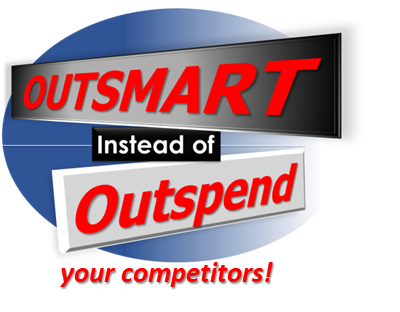
So Now What?
So, since advertising itself is a “craps-shoot”, you must understand the significance of the message itself. Your message MUST resonate with whatever audience is available to you. Here’s why… the available market for your product or services isn’t typically going to get larger (there’s only so many sales opportunities available at any given time). In order to grow your sales, you’re going to have to take some opportunities from your competitors.
In order to do that, your ad message must speak to the Buyer’s Journey. That is, the conversation going on in the mind of the target prospect while they’re determining WHO they’ll buy from.
What this means is: the prospect has a problem they don’t want and need a solution they don’t have. When your message speaks to their issue with a solution to their problem while creating value, you not only attract the “now buyers” (the 2% of any audience typically in-market for you sell at any given time) but also attracts future buyers (the other 98%) that are researching a contemplated purchase but are not yet ready to buy now.
While traditional advertising with local media is a huge waste of money, it is sometimes necessary just to stay relevant. However, there are multiple ways to drive sales. For the sake of this post, let’s say local media advertising is your only choice for now.
What you must do is get your message refined so it’s effective. Only then does it make sense to move on to more efficient ways to advertise and save money.
But, first things first. You must make your message more effective. This will help immensely in getting more results from traditional advertising. So, how do you make it more effective? That’s actually pretty easy. You see, your ad must relate to the conversation going on in the mind of the prospect that wants or needs what you sell.
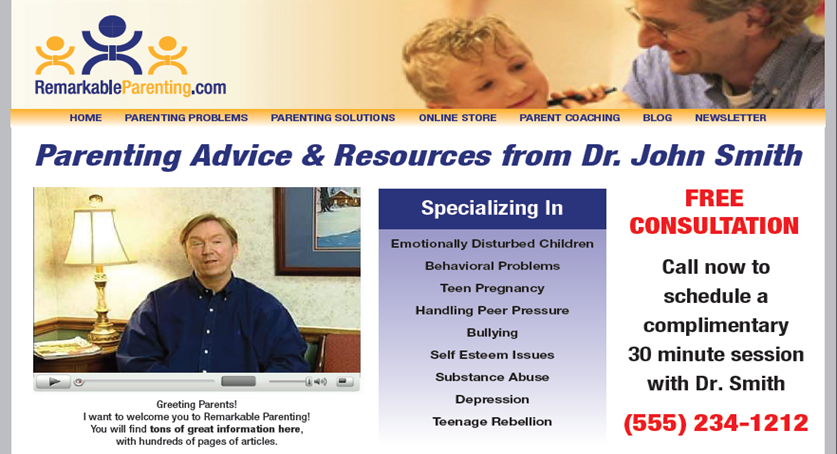
What you see above is a typical website. We changed the doctor’s name and his business name for the purposes of this post. The doctor was NOT unhappy with the results he was getting from his website. The point here is no matter what you do in marketing, would you be upset if the results were better without paying more? Didn’t think so.
Anyway, the doctor’s website was typical in that the first thing you see is his logo. He likes his logo but it means nothing to prospects. We see typical artwork that has little to do with the issues the doctor solves for people. He has a video which is good for SEO, but the copy below it tells prospects he has “hundreds of pages of documents”. While the doctor is using this to provide some validity to his ability to help, as a prospect that needs help right now, do you want to sift through hundreds of pages of documents to maybe find what your looking for? Nope.
Next the doctor identifies all the areas in which he specializes. This is a common mistake… trying to be all things to all people in the hopes you’ll hit on something (can you say “throwing darts”?). Remember, this is a website. People are searching for specific help through keywords.
Before you say “more keywords is better”, it’s not. Think about how you search. When you’re looking for something specific, finding an ad or service that can be found with literally hundreds of keywords is junk that clutters the results page and only frustrates searchers looking for something specific.
Now comes the most crucial mistake – the Call to Action or CTA. The doctor offers a “free consultation”. While this works for those desperate for help, that’s a relatively small number of prospects. The doctor hasn’t proven he CAN help. That proof is a differentiator that would separate him from his competitors. But, since his website (and ads) look the same as all his competitors, the majority of his web traffic “bounces” out and may never be heard from again.
That’s highly inefficient and actually hurts the doctor’s SEO as well as recurring traffic as he’s now a “been there” search with lots of people determining he’s not what they’re looking for.
His “free consultation” is actually a high-risk offer for most people. For those investigating from whom they might get help they see the offer as a sales pitch. They know the doctor will try to close them on becoming a patient and they’re not ready because he’s offered no proof he can actually solve their issue. So, the bulk of his traffic says “no thanks” and moves on.
Here’s how we helped.
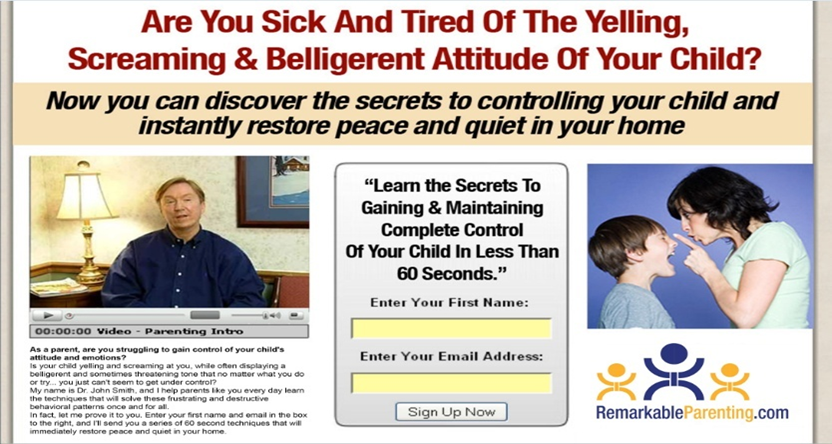
First, we didn’t change the doctor’s website. We created a squeeze page that addresses one single issue. With a squeeze page, visitors can only do two things: sign-up or close out. They don’t get lost in a website clicking other pages and forget why they are there.
Also, take a look at the headline. Does that relate to a specific issue? It sure does. The sub-headline relates to the specific solution the doctor offers. We kept the video but changed the copy below to offering to “restore peace and quiet” through a series of 60 second videos prospects can get for free. The call to offer was simple: enter your name and email and get instant help. The artwork (picture) keys in exactly with the issue parents are experiencing – they can relate immediately.
We created squeeze pages for all the doctors specialties and campaigns for each that didn’t cost him any more money, but got him 18 times the results collectively.
There’s more, but this post is already too long. But, hopefully you can see why these changes had such an impact on the doctor’s results. By separating his specialties and creating landing (squeeze) pages for each, the doctor began experiencing “exponential” growth instead of living with linear growth (again, that’s another post).
This growth was only the beginning. We developed “drip campaigns” that not only didn’t cost the doctor another dollar, but saw an increase in verifiable and qualified leads 56 times greater than what he had before!
When you differentiate your business from your competitors with regard to perceived value (price is important but research shows people prefer value over price), you give the consumer aspects to consider other than price. Make this change and test it. Keep refining until you get it right.
Then, we’ll talk about getting more efficient with your marketing dollars. Let me know if I can help. Good luck… you deserve it.

